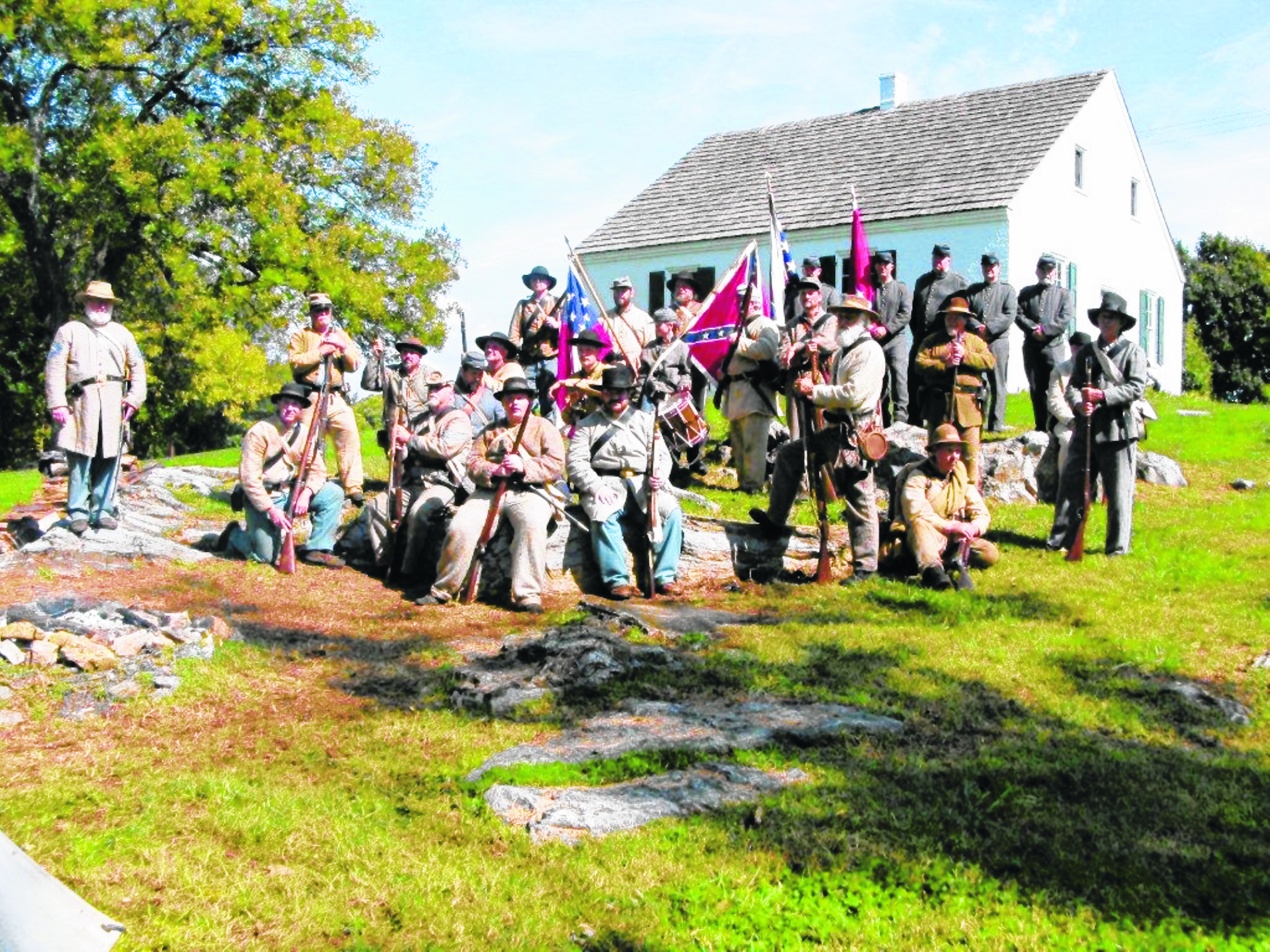A contingent of Civil War re-enactors last month traveled to the Antietam National Battlefield Park near Hagerstown, Md., not as an invading Confederate army, but to rededicate a monument to Georgians who fought and died there 150 years ago.
"Ted Alexander, the park's historian, contacted me about taking part in a commemoration of the 150th anniversary of the battle," said John Culpepper, chairman of the Georgia Civil War Commission and city manager for the city of Chickamauga.
That call led to 26 local re-enactors traveling to the site where Confederate troops first battled on Union soil and where on the afternoon of Sept. 17, 1862, outnumbered and outgunned, they stalled the Union's advance for nearly three hours.
"We went to honor troops from Georgia who fell at the battle and rededicate our state monument at the behest of the National Park Service," Culpepper said.
The Battle of Antietam was the bloodiest one-day battle in American history, pitting the Union Army of the Potomac, commanded by Gen. George B. McClellan, against Gen. Robert E. Lee's Confederate Army of Northern Virginia.
After Confederate and Federal forces fought for 12 hours in fields around Sharpsburg, Md., and along Antietam Creek, more than 23,000 Americans had been killed, wounded or were missing on the battlefield.
The morning of Sept. 18, 1862, after renewed attacks by McClellan's forces never materialized, Lee's army began its retreat to Virginia. Neither side claimed victory at Antietam, but the battle ended the first Confederate invasion of the North and led President Lincoln to issue the Emancipation Proclamation.
Culpepper said the state Legislature in 1961, the 100th anniversary of the Civil War, approved placing three monuments - one each at Vicksburg, Gettysburg and Antietam - to recognize those who "defended the state of Georgia."
Those identical monuments consist of an 8-foot shaft of polished blue granite, mined in Elberton, Ga., that stands on a slightly wider, tiered pedestal base.
Beneath the state seal, the monuments bear the inscription:
"Georgia Confederate Soldiers
We sleep here in obedience to law
When country called we came
When duty called we died"
Culpepper said the re-enactors "represented the 45th Georgia in the Army of Virginia" and included seven members of the Civil War Commission, who camped on the battlefield the night before the rededication.
"We were near Dunkers Church," he said.
The church that served a congregation of Dunkers, so called because its denomination requires full-immersion baptism, had been a Confederate command center prior to the battle and a hospital in its aftermath.
Culpepper said the re-enactors marched from the church to a nearby cornfield, as their counterparts had done 150 years earlier, for the rededication.
Because Gov. Nathan Deal was unable to attend, state Sen. Jeff Mullis (R-Chickamauga) delivered the keynote speech at that ceremony.
"Georgia played a prominent role at the battle - about 21 percent of Lee's force was from Georgia - and it was an honor for us to commemorate the citizen soldiers of Georgia and the sacrifices they made on that hallowed ground," Culpepper said.
